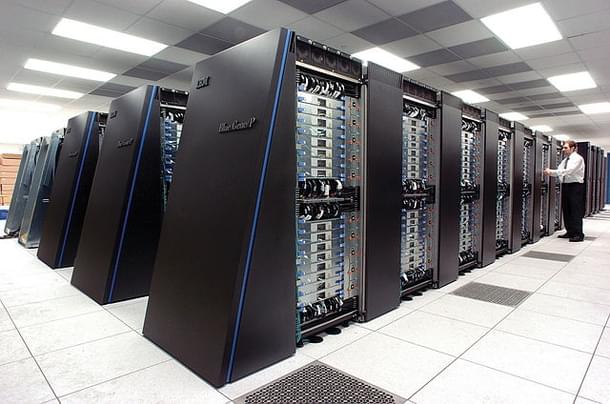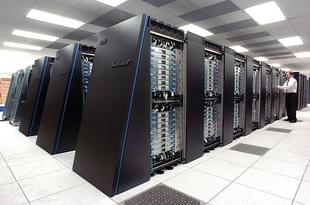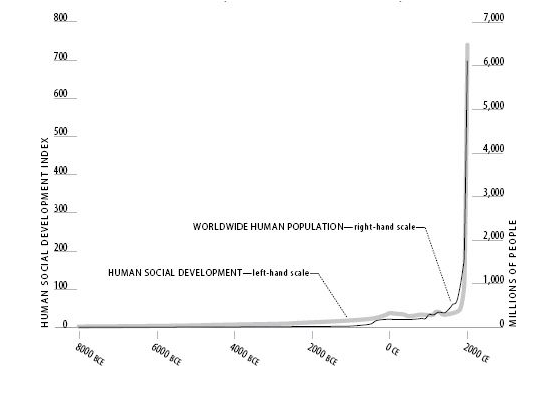Books
Welcome To The Post Industrial Age
Sujeet Mishra
Dec 21, 2015, 06:18 PM | Updated Feb 10, 2016, 05:29 PM IST
Save & read from anywhere!
Bookmark stories for easy access on any device or the Swarajya app.


We are in the midst of a major disruption as the century-long fetish on efficiency, standardisation and reductionist approach to management has run its course.
We are in the midst of a major disruption. As General Stanley McChrystal (retired officer of the US Army) argues brilliantly in the book Team of Teams, the century-long fetish on efficiency, standardisation and reductionist approach to management has run its course.
The forerunner of industrial engineering, FW Taylor, dealt a death knell to the secretive and opaque guilds by atomising the industrial endeavour into a precise set of steps.

This influenced war and industry alike and became the bedrock of modern managerial practice and governance. So, when the US jumped into WWII, men and women who barely had any industrial training churned out 3,10,000 aircrafts, 1,24,000 ships, 60,973 tanks by 1945! All because of the reductionist approach.
Clearly, this approach has run its course and it would impact all facets of our life.
The following graph tells us that we are in fundamentally different times. The worldwide human population and human social development when plotted together tracks each other rather closely. The curve sees a real bend in the 1990s — this period was the dawn of a networked digital era (digital computers have been around since the 1950s).

What makes this age so very different?
The three ‘d’s describe this age: demonetised, dematerialised and digitalised. So, whether its Uber, Airbnb, Bitcoin, Google, Facebook, the scale envisioned in the Gigafactory of Elon Musk or, for that matter, Tesla cars, or the genome maps and interventions arising from there — disruption stems from one or all of these attributes. Whether it’s a shared economy, the new disruptive battleground which promises to lower the cost to economy and bruise established order (including municipal laws or statutes as in Uber or Airbnb) or shared intelligence, or the ubiquitous connectivity being brought in the Internet of Things — it gets traced to one or all of these attributes.
A genome map (remember Bill Clinton-Tony Blair jointly announcing the successful mapping of human genome, which cost a few billions of dollars, as a multi-nation initiative) now being done for a few thousand dollars — this is an exponential fall in price and an exponential rise in access. Peter Diamandis and his team looks at a future where big data analytics would correlate the pictures, voice samples and genome of millions and come to a stage where “one can print a photograph when all you have is a sample of skin from the scene of crime”.
Small And Niche Are The Way To Go
A pocket app called kickstarter gives window in to the exponential creativity that has gripped the world. There is even a paper plane which has its own advanced control system!
As Chris Anderson argues that the economy of scale is inexorably becoming scaleless again. What better description of tomorrow’s factory — it gets manufactured at your desktop by a desktop 3D printer. Justin Beieber got launched from YouTube!
3D printing has already started disrupting manufacturing, medicine and what not. Neonatal surgeries now take advantage of 3D printed hearts generated by detailed scans, on which surgeons practice. A desktop 3D printer is now available on Amazon! Orthodontists would routinely 3D print the dental jobs- custom made for us, so would the prosthetics be tailor made. Buildings are now being 3D printed. A 3D printed burger-possibly soon!
To lower the access bar to computing, a self-contained computer board called Raspberry Pi was created and it spurred a revolution, USD 35 apiece. Now last month Raspberry Pi Zero was launched where you can get a cutting edge processor board for – hold your breath – USD 5! Throw in some additional hardware and you have a matchbox size computer! Not to forget that mobile phone in your pocket is something that packs more processing power than the Apollo missions.
The new flat world is for the digital natives. MOOCs (Massively Online Open Courses) now define the education. Gone are the days where one needed a ton of money for exquisite education-MOOCs are a healthy substitute. So, geography ceases to limit access to quality education. Boutique online training courses and certification can create interesting job opportunities outside the expensive university framework.
The prognosis is clear: the digital natives need to be equipped with new gear. The value would increasingly reside in a new skill set: Ability to think in terms of big data, democratisation of knowledge, non-proprietary supercomputing level languages (like Julia which counts an Indian origin man as an author-written in 2009 at MIT) and crowdsourcing of resources, information and the Internet of Things (IoT). A Raspberry zero in every middle level school goer’s bag as a must have toy- its an imperative as important as a midday meal.
Would we mine asteroids-possibly yes. With Elon Musk’s SpaceX aiming to replace the Russian supply ships to ISS, he targets sending his cheap aircrafts to deep space and mine free floaters. And he is not alone.

SpaceX is an interesting venture-nothing was invented-it was a clever application of existing technologies (doesn’t that remind one of Steve Jobs?). Elon Musk’s Tesla also represents same strain of thought. See this-a bold attempt of a moon shot, here from India-the official entry for the Google’s Lunar X-Prize.
Deep learning, made possible by advanced and accessible computing means telemedicine would go much deeper and pervasive. The scans would be interpreted by a Watson faster, more accurately and on demand, unrestrained by the geography or time. AI has already gone mainstream-Hello Google to Siri to IBM’s Watson, from telling you about neighbourhood pizza outlet to deciphering the MRI scan – AI has moved from computers to the autonomous cars and trucks. Same is with the robots. Kuka robots of Tesla factory work as hammals, work as intelligent set of artisans with ability to change the tools they work with. Assembly lines get configured on the fly by the change of software to produce something else– marking dematerialisation of painful and expensive assembly line reconfigurations.
The New Survival Toolkit
This needed tool kit is still not part of our UG studies in our colleges. Look at the impact of COP21-a new set of energy related interventions would be needed. They would require a new math and new ITES framework-something we can and must take lead in.
Project bloodhound has been expressly created by the British to get kids interested in S&T again. What an idea-making a supersonic car-with likes of Rolls Royce bringing their engineering might in to the project to get young minds excited about science and engineering. BARC used to run some projects to get kids interested in maths-not sure of it now.
No wonder White House after supporting Human Genome project is now supporting Material Genome-which is expected to bring industrial applications faster with novel materials.
For a nation struggling to get GST passed all this is indeed a tall order. We may be one nation – but we are not yet a single market. Think about it: in EU transnational business is far simpler than our inter-state movement of goods!
Dr Sujeet Mishra is a railwayman and currently the OSD of the National Rail and Transportation Institute, which is in transition to become Gati Shakti Vishwavidyala, a central university.





